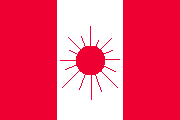Peru

| |
| Languages: | |
| Official: | Castilian |
| Others: | Quichwa |
| Cities: | |
| Capital: | Lima (la Ciudad de los Reyes) |
| Largest: | Lima |
| Other: | Callao, Trujillo |
| Monarch: | Alfonso José I de Peru |
| Prime Minister: | Pablo Pedro Mętanyk |
| Independence: | from Castile and Leon |
| Declared: | |
| Recognized: | |
| Organizations: | Castilian Commonwealth |
Administration
The Kingdom of Perú is a constitutional monarchy in personal union with the Kingdom of Castile and Leon. Although it shares a monarchy with Castile, in practice it has a substantial degree of control over its internal affairs, though historically and even today Castile has interfered significantly in Peruvian politics, ostensibly to protect its interests in the region.
Government
Administrative Divisions
History
Peru has its origins in the Great American War of the early 1800s, when Napoleonic incursions into the mother country forced government to temporarily be moved to the colonial state in the Americas. The Viceroy of the Americas at the time, King Carlos I, delegated much his power to liberal prime minister Jorge Elias Camacho, resulting in widespread consternation and inquietude among the nobility in Nuevo Leon and Peru. In addition, native rebellions which had begun shortly after the fall of Castile to Napoleon sharply intensified across Castilian territories, as Native leaders saw an opportunity to overthrow rule by European colonists and restore their old empires.
Geography
Borders
North: New Kingdom of Granada and Equador.
Southwest: Pacific Ocean.
Southeast: Tawantinsuyu.
East: Paraná.